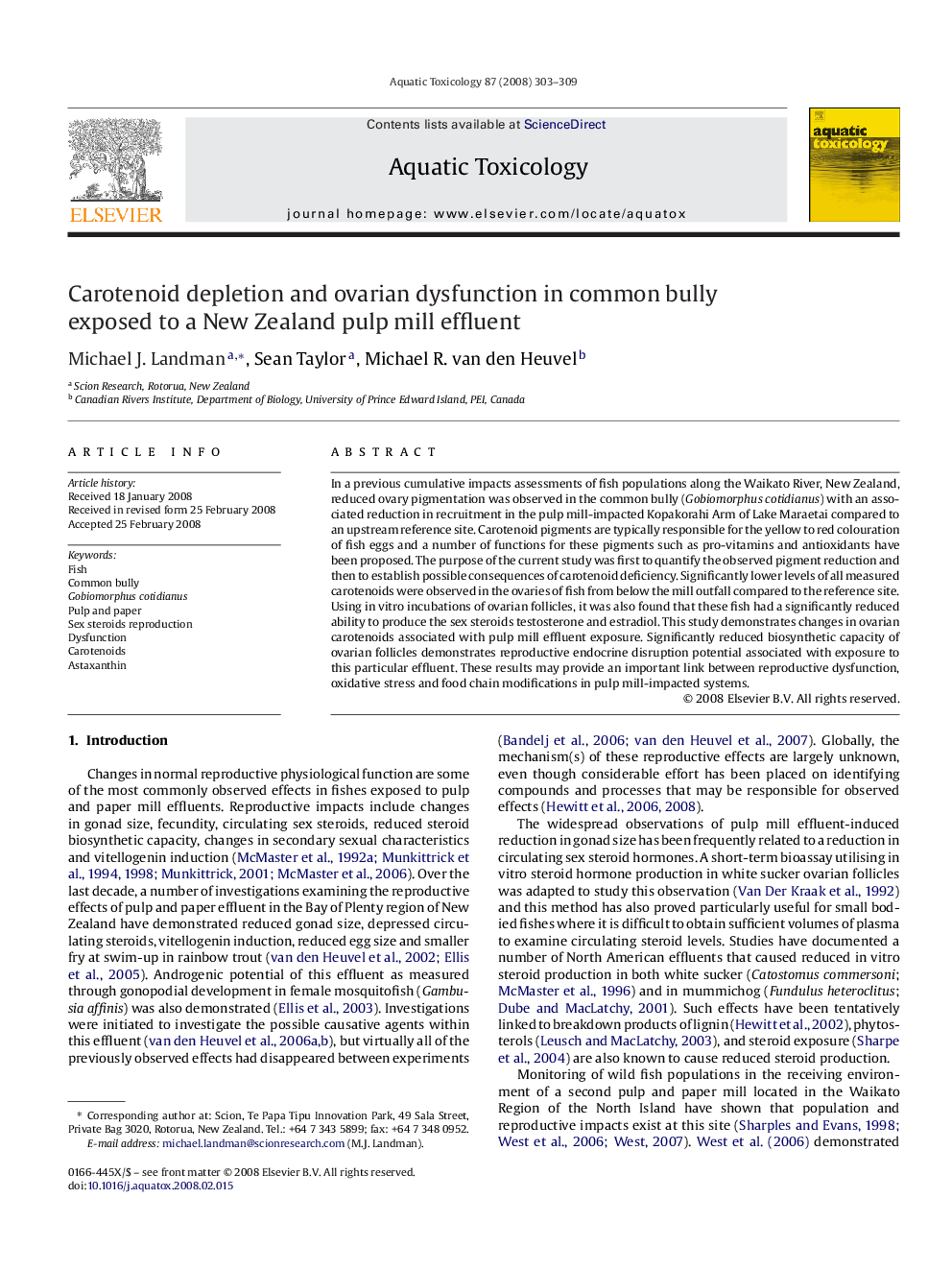| Article ID | Journal | Published Year | Pages | File Type |
|---|---|---|---|---|
| 4530944 | Aquatic Toxicology | 2008 | 7 Pages |
In a previous cumulative impacts assessments of fish populations along the Waikato River, New Zealand, reduced ovary pigmentation was observed in the common bully (Gobiomorphus cotidianus) with an associated reduction in recruitment in the pulp mill-impacted Kopakorahi Arm of Lake Maraetai compared to an upstream reference site. Carotenoid pigments are typically responsible for the yellow to red colouration of fish eggs and a number of functions for these pigments such as pro-vitamins and antioxidants have been proposed. The purpose of the current study was first to quantify the observed pigment reduction and then to establish possible consequences of carotenoid deficiency. Significantly lower levels of all measured carotenoids were observed in the ovaries of fish from below the mill outfall compared to the reference site. Using in vitro incubations of ovarian follicles, it was also found that these fish had a significantly reduced ability to produce the sex steroids testosterone and estradiol. This study demonstrates changes in ovarian carotenoids associated with pulp mill effluent exposure. Significantly reduced biosynthetic capacity of ovarian follicles demonstrates reproductive endocrine disruption potential associated with exposure to this particular effluent. These results may provide an important link between reproductive dysfunction, oxidative stress and food chain modifications in pulp mill-impacted systems.
